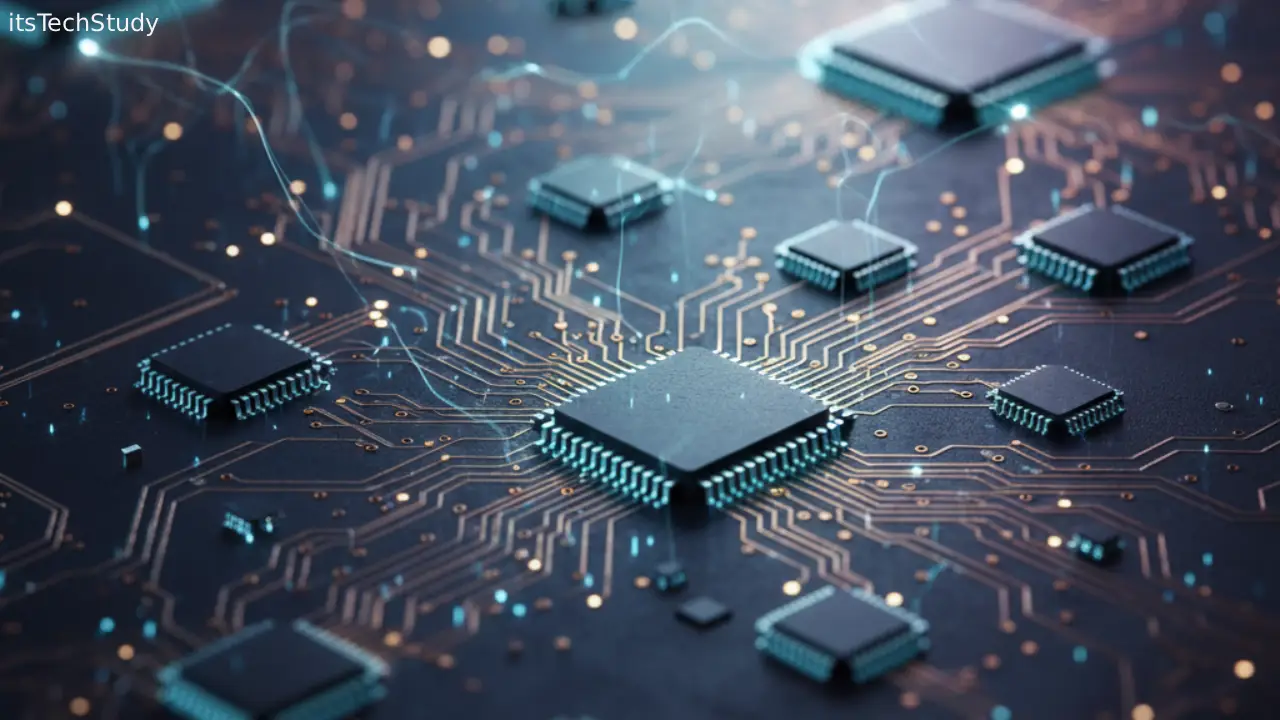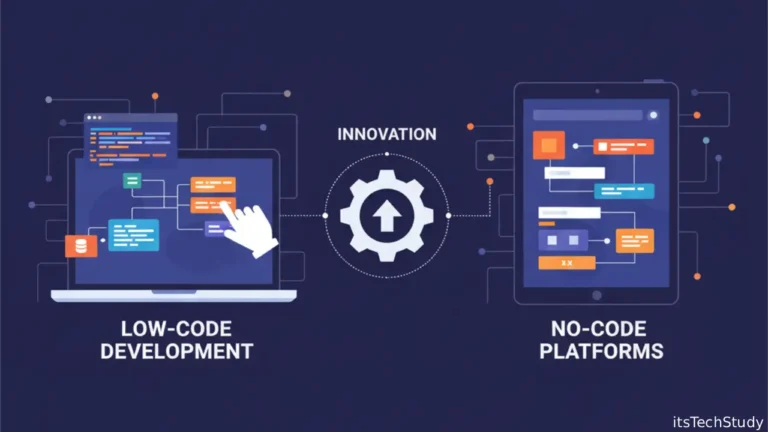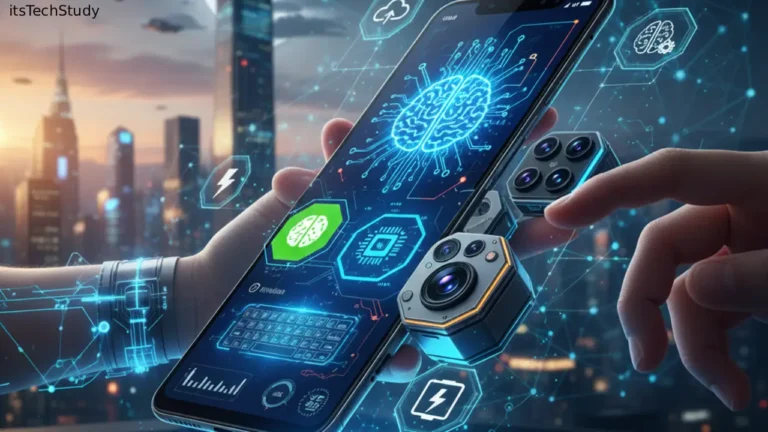Introduction: The Invisible Revolution in Your Hand
Every few years, our smartphones transform so radically that yesterday’s “latest model” suddenly feels ancient. Just a decade ago, mobile phones were primarily tools for communication. Fast forward to today, and they’ve evolved into all-in-one hubs for photography, entertainment, health tracking, payments, and even creative production.
Yet, most of us rarely stop to ask – what really goes on behind the screen? What cutting-edge technologies make these sleek devices so powerful, responsive, and intelligent?
The mobile industry is currently at a turning point. As manufacturers push boundaries with AI-enhanced processors, foldable displays, quantum security, and sustainable materials, the line between smartphone and supercomputer continues to blur.
In this article, we’ll explore the unseen tech that powers your mobile phone – from hardware breakthroughs to futuristic innovations – and why understanding them matters in a world increasingly defined by digital experiences.
The Power Within – Advanced Mobile Processors and AI Integration
The processor is the heart of any smartphone, and today’s chips are far more than mere computing engines. Modern mobile processors, like Apple’s A18 Pro or Qualcomm’s Snapdragon 8 Gen 3, combine AI, machine learning, and GPU acceleration to deliver performance that rivals desktop computers.
From Dual-Core to Neural Engines
Early smartphones featured basic dual-core CPUs optimized for battery efficiency. Now, processors come with dedicated neural processing units (NPUs) that handle complex tasks like image recognition, voice assistance, and real-time translation.
For example:
- AI in cameras helps identify subjects and adjust lighting automatically.
- AI in battery optimization learns your usage habits to extend charge life.
- AI in gaming provides smoother frame rates and adaptive performance.
| Processor Generation | Key Innovation | Impact on Users |
|---|---|---|
| 2010–2014 | Quad-core CPUs | Faster multitasking |
| 2015–2018 | AI Co-processors | Smarter photography & voice recognition |
| 2019–2022 | 5G Integration | Ultra-fast connectivity |
| 2023–2025 | AI-First Architecture | Personalized, adaptive user experience |
Display Technology – Where Science Meets Art
The display is more than just a screen – it’s your window into the digital world. The race to produce brighter, thinner, and more responsive displays has led to innovations that once seemed impossible.
OLED, AMOLED, and the Rise of Foldables
Modern displays now feature AMOLED panels, offering deep blacks, energy efficiency, and vivid color contrast. Foldable displays, pioneered by Samsung and Huawei, introduced flexible glass technology capable of bending without breaking – a marvel of nanomaterial engineering.
Refresh Rates and Visual Smoothness
From 60Hz to 240Hz refresh rates, every swipe and scroll feels more fluid. Gamers especially benefit from adaptive refresh rate displays that balance performance and battery life.
Pros of Modern Display Technology:
- Crisp visuals and color accuracy
- Energy efficiency through OLED panels
- Foldable designs enable multitasking and portability
Cons:
- Fragile and costly to repair
- Higher battery consumption on ultra-bright modes
Connectivity Revolution – 5G and Beyond
Connectivity defines the mobile experience. The shift from 4G to 5G networks wasn’t just about speed – it revolutionized how we connect, communicate, and consume content.
How 5G Changes Everything
With speeds up to 100 times faster than 4G, 5G enables:
- Seamless cloud gaming
- Real-time augmented reality (AR) applications
- Instant file transfers and low-latency video calls
But the evolution doesn’t stop there. 6G technology, expected around 2030, promises even faster speeds, integrated AI communication, and near-zero lag — potentially changing how devices “think” together.
Camera Innovations – Turning Every User into a Creator
If there’s one area where smartphone technology has advanced dramatically, it’s the camera. Modern smartphones pack multiple lenses, sensors, and AI algorithms to rival professional DSLRs.
The Multi-Lens Revolution
A typical high-end smartphone now includes:
- Wide-angle lens – perfect for landscapes
- Telephoto lens – zoom without losing detail
- Macro lens – capture close-up textures
- Depth sensor – enables portrait effects and AR features
Computational Photography – AI Meets Optics
Software now plays as crucial a role as hardware. Computational photography uses AI and machine learning to merge multiple shots into a single, perfectly balanced image. This makes every photo – day or night – Instagram-ready with minimal effort.
Battery and Charging – Powering Performance Efficiently
Battery technology may not evolve as visibly as cameras or displays, but it’s critical for user satisfaction.
Fast Charging and Beyond
Modern phones now support 120W fast charging, juicing up from 0–100% in under 20 minutes. Wireless and reverse wireless charging allow users to power accessories or even another phone on the go.
Pros of Fast Charging:
- Saves time for busy users
- Convenient for travel and emergencies
Cons:
- Can reduce long-term battery lifespan
- Generates heat during heavy use
Solid-State and Graphene Batteries
Future devices may adopt graphene batteries, offering higher capacity, quicker charging, and better thermal management – potentially ending the battery anxiety era.
Security Enhancements – Protecting Data in a Connected World
Smartphones are now digital wallets, ID cards, and workstations – making security essential.
Biometric Advancements
From fingerprint sensors to 3D facial recognition and iris scanning, biometric security adds layers of protection while keeping user experience smooth.
AI-Powered Threat Detection
Mobile operating systems now employ AI-based threat detection to identify malware, phishing, and suspicious app behavior in real time.
Comparison of Mobile Security Features
| Feature | Introduced Year | Security Strength | User Convenience |
|---|---|---|---|
| PIN/Password | 2000s | Medium | Low |
| Fingerprint Sensor | 2013 | High | High |
| Face Unlock | 2017 | Medium–High | Very High |
| AI Security & Encryption | 2020+ | Very High | High |
Sustainability and Green Tech in Smartphones
As the world becomes more eco-conscious, smartphone brands are embracing sustainability – from materials to manufacturing.
Eco-Friendly Materials
Companies like Fairphone and Apple are pioneering the use of recycled aluminum, bioplastics, and eco-friendly packaging.
Modular and Repairable Phones
The concept of modular design allows users to replace or upgrade parts instead of buying a new phone, reducing electronic waste significantly.
Benefits of Sustainable Mobile Design:
- Reduces environmental footprint
- Encourages longer device lifespan
- Promotes ethical sourcing
The Future of Mobile Technology – What’s Next?
Looking ahead, smartphones are becoming more like personal AI companions. Technologies under development include:
- Self-healing displays that repair scratches automatically
- Holographic interfaces replacing flat screens
- Quantum encryption for ultimate data security
- Neural interaction systems allowing thought-based control
The fusion of AI, quantum computing, and nanotechnology will redefine what mobile devices can do – creating smarter, more adaptive ecosystems.
Conclusion: A Glimpse Beyond the Screen
Today’s smartphones are masterpieces of science and engineering – devices that pack the power of a supercomputer into your pocket. From AI-powered chips and foldable screens to 5G and sustainable design, each innovation shapes how we live, connect, and create.
As we look ahead, the next wave of breakthroughs – from quantum-level encryption to brain-computer interfaces – will make mobile phones not just smarter, but seamlessly integrated into human life.
The real revolution, however, isn’t the technology itself – it’s how we choose to use it. The more we understand what’s behind the screen, the better we can harness its power responsibly, sustainably, and creatively.
FAQs: Understanding Mobile Phone Technology
Q1: What is the most advanced mobile technology in 2025?
Ans: AI-driven processors and 5G integration lead the charge, enabling faster, smarter, and more energy-efficient devices.
Q2: How does AI improve smartphone photography?
Ans: AI automatically adjusts lighting, color, and exposure to create professional-grade photos with minimal user input.
Q3: Are foldable phones durable?
Ans: Yes, new-generation foldable screens use ultra-thin glass and reinforced hinges, though they still require careful handling.
Q4: Will 6G replace 5G soon?
Ans: Not immediately — 6G is expected by 2030, focusing on AI-based connectivity, ultra-low latency, and integrated device intelligence.
Q5: How are smartphones becoming eco-friendly?
Ans: Through the use of recycled materials, modular components, and energy-efficient production processes.
Q6: What’s next for mobile batteries?
Ans: Graphene and solid-state batteries promise faster charging, higher capacity, and improved durability.












No Comments Yet
Be the first to share your thoughts.
Leave a Comment